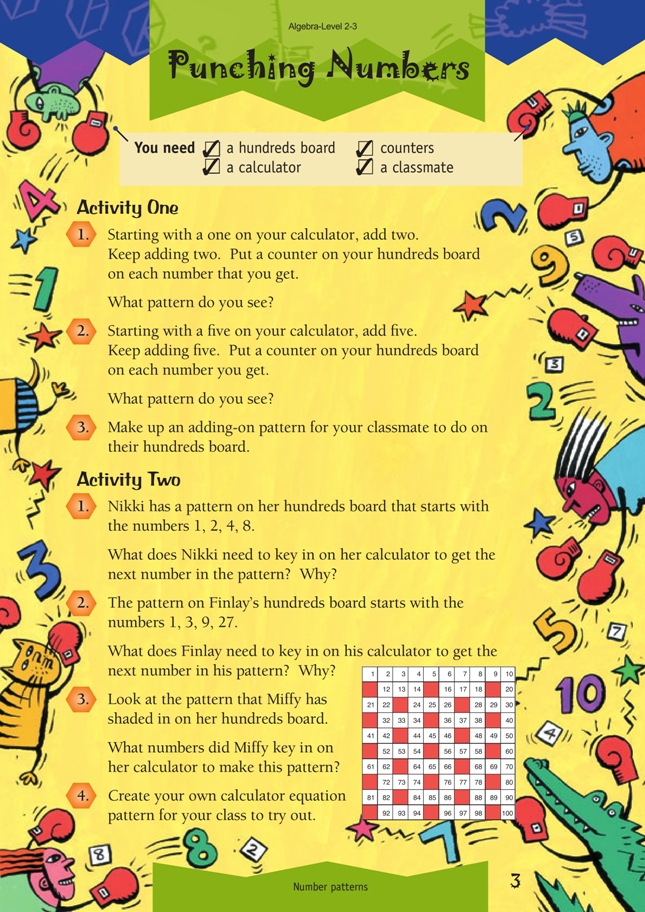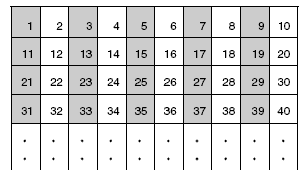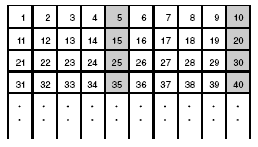Punching Numbers
This is a level 2 algebra strand activity from the Figure It Out series.
A PDF of the student activity is included.
Click on the image to enlarge it. Click again to close. Download PDF (338 KB)
create a number pattern
calculator
FIO, Level 2-3, Algebra, Punching Numbers, page 3
counters
classmate
The aim of this page is to encourage students to connect rules involving repeated addition or multiplication to their geometrical representation on a hundreds board. Students will need copies of the hundreds board to record their patterns.
Activity One
1. The sequence of numbers will be 1, 3, 5, 7, 9, 11, 13, 15, …
This can be generated on most calculators by keying in (Teachers will need to check that this works on the calculators used by students. Some scientific calculators are not suitable for this.)
The geometric pattern is that every second column is shaded:
2. The sequence of numbers will be 5, 10, 15, 20, 25, 30, …
This can be generated on most calculators by keying in:
The geometric pattern is:
You will need to show students how to use the constant capability of the calculator. For instance, will generate the sequence 5, 8, 11, 14, 17, … (or, on some calculators, 5, 7, 9, 11, …)
Activity Two
This activity requires students to “work backwards” from the number sequence to establish the rule. Students could check the rule by repeatedly keying in the “x 2”, for example, or they could generate the number sequence as follows:
1. The next number will be 16 as the function keyed in was ![]() , making the next number double the previous number. (You could also use
, making the next number double the previous number. (You could also use .)
2. Similarly, the next number in Finlay’s pattern will be 81 as the next number is three times the previous number. This sequence can be created by keying in.
3. Miffy’s pattern is growing by four, which indicates a constant. The pattern starts at eleven, so either
are acceptable.
Note: As with other calculator function activities, you will need to check that these work as suggested on the calculators used by the students.
Answers to Activities
Activity One
1. Answers could include: The counters are in a vertical pattern.
2. Answers could include: The counters are vertical; they are in a straight line going up.
3. Answers will vary.
Activity Two
1. or
Each number is twice as large as the previous number.
2. or
Each number is three times as large as the previous number.
3. Either ![]() or
or
4. Answers will vary.


